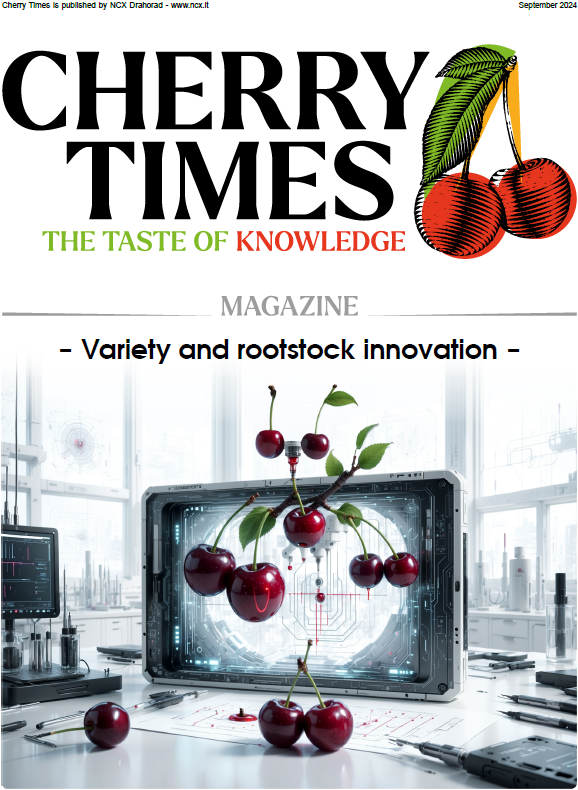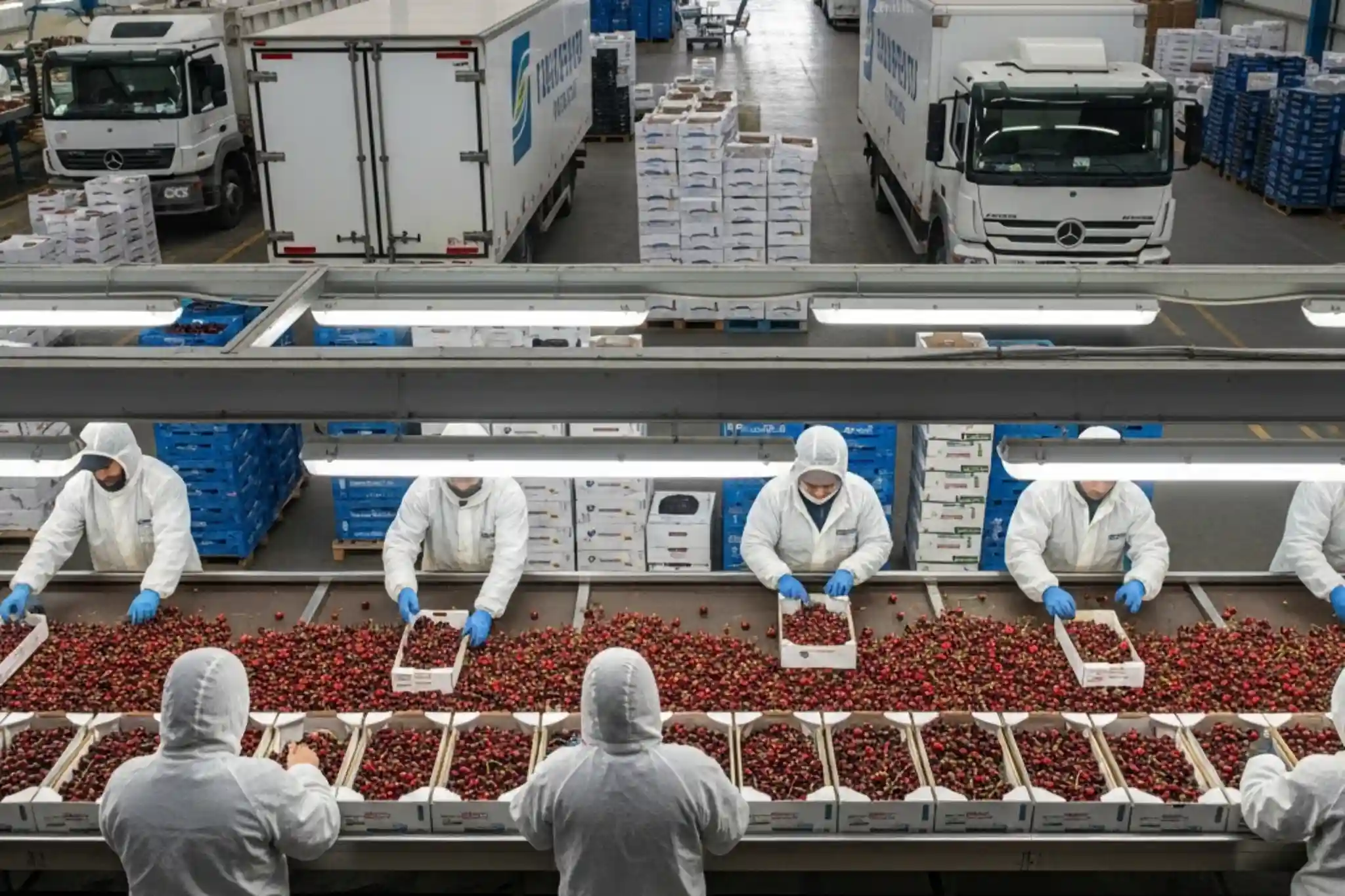Cherry Times Magazine is back in print and digital format full of content, news and information on the world of cherries.
Pick up your free copy at Fruit Attraction (Madrid) in the Press Area!
In this number
The last decade has seen an astonishing growth of +266% in the global trade of fresh cherries. At Cherry Times we are working hard to keep the pace of the industry and in the last 12 months we have grown our contacts by +185% and our visualizations have grown 438% YOY in the last three months. We started in 2023 and now we are reaching a large and growing community of readers in 167 different countries all over the world.
Our mission is to provide high quality information and education on all aspects of the cherry industry to a worldwide professional audience. This is why we decided to focus this edition of the Cherry Times magazine on varieties and rootstocks innovation, a key topic for the long-term development of the industry.
Product and process innovations introduced by public and private research are giving new impetus to the spread of specialised cherry cultivation to new areas and new markets. The contribution of genetics has been fundamental to this growth and will probably be even more so in the coming years if the ongoing variety revolution is managed differently and better by all players in the cherry sector, starting with those who create, manage and develop the new varieties.
In the new breeding programmes, along with the traditional objectives - such as increasing productivity, improving fruit quality and extending the ripening calendar - work is being done on the selection of new traits, such as resistance and tolerance to biotic (fungal and bacterial diseases) and abiotic (cracking) stresses, plant adaptability to climate change and the possibility of growing cherry trees in new areas, such as those with low chill requirements.
Unlike in the recent past, new cherry genotypes should be selected to respond as well as possible, and with as little damage as possible, to new post-harvest technologies, starting with the cold chain, electronic quality selection and controlled atmosphere storage.
 Cherry Times Magazine #2 cover, by Mario Barbieri.
Cherry Times Magazine #2 cover, by Mario Barbieri.
In addition, the new destination markets for cherries require that the varieties are suitable to withstand long transports and, once they reach their destination, ensure a sufficient shelf life to arrive in the best condition to the final consumer. Although 10-15 new cherry varieties are churned out around the world every year, the ideal and perfect variety remains a chimera.
It is no coincidence that in the main cherry-growing countries, especially in emerging countries where the product is destined for export, the most cultivated varieties continue to be the traditional and extensively tested ones, such as Santina and Lapins in Chile, Ziraat in Turkey and its sister Ferrovia in Italy, Kordia and Regina in northern European areas.
In order to be successful, a new variety should be tested beforehand and properly evaluated in the cultivation environment, which is very often different from the original one. These preliminary tests should be carried out by super partes bodies, as is the case, for example, in France thanks to the CTIFL or as was the case in Italy thanks to the far-sighted ministerial project on varietal orientation lists for fruit trees.
Alternatively, considering that almost all new varieties placed on the market are patented, it should be the publishers of the varieties who should verify and assure producers of the actual value of the varieties placed on the market. With rare exceptions - such as the virtuous example of the new variety Sweet Aryana® introduced in Chile by the ANA group - this is not the case.
The varieties continue to be proposed to growers by the propaganda of the nursery companies and the risks of failure, as well as the chances of success, are in the hands of the growers alone. To remedy this, and following the positive feedback from the apple and kiwi variety scene, for some new cherry varieties, programmed formulas for more or less integral management of the cherry sector are finally starting to spread.
Cherry Times is here to guide the global cherry community through this path of knowledge and innovation. Subscribe to our newsletter and stay tuned with regular updates on research and development of cherry varieties, advanced cultivation techniques, sustainable management, quality control, post-harvest, crop protection strategies and the economic and marketing trends driving the global cherry market.
Cherry Times - All rights reserved











